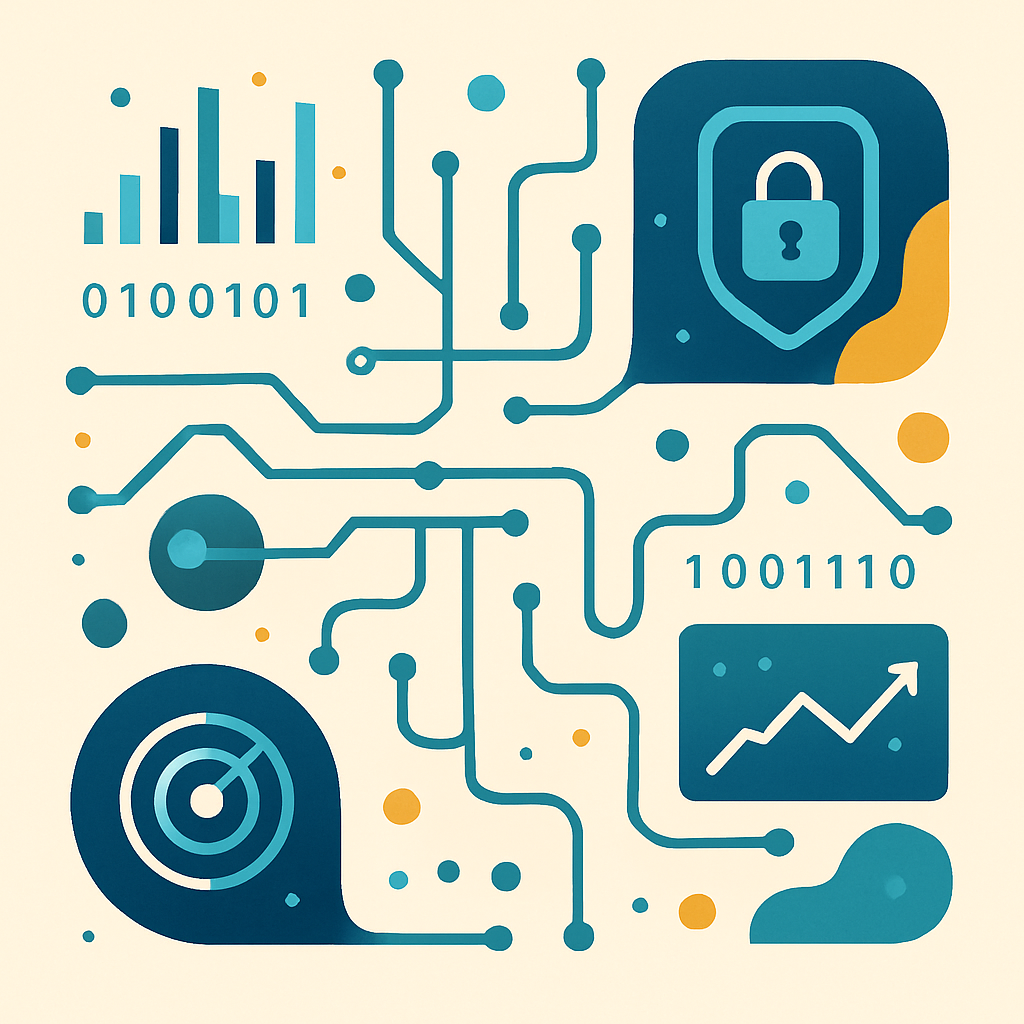Introduction (TL;DR): If even tech titans (like Apple, Google, and Meta) can suffer massive data breaches, then are healthcare organizations unable to receive cyberattacks targeting valuable patient data? This guide is more than a polite wake-up call and reveals why cybersecurity is no longer just an IT issue but an urgent, non-negotiable priority for every healthcare leader. Let's outline the critical year-round strategies HIPAA-covered entities and business associates must implement now to safeguard their patients, their reputation, and their operational survival.
When Giants Fall: Why Your Healthcare Organization Must Prioritize Cybersecurity Now
Imagine the unsettling news: billions of personal passwords from global tech leaders like Apple, Facebook, and Google have been exposed. Forbes recently detailed such a scenario, a data breach of almost incomprehensible scale. This isn't merely a cautionary tale for tech companies; it's a blaring siren for every organization entrusted with sensitive data. And for those of us in healthcare, where patient trust is sacred and Protected Health Information (PHI) is a coveted prize for cybercriminals, this news demands our immediate and focused attention.
If the world's most technologically advanced corporations can be breached, what does this signal for your clinic, hospital, or medical billing service? It signals that vulnerability is a universal constant. The critical question isn't if an attack could occur, but when. More importantly, how prepared are you? The truth of HIPAA compliance is a vigilant stance: the answer to "when" can determine the difference between operational resilience and devastating consequences, from crippling financial penalties to irreparable damage to your reputation and, most critically, the erosion of your patients' trust.

The Unseen Threat: Why Healthcare Data Remains a Prime Target
Healthcare organizations aren't just targets; they are prime targets. The reason is straightforward: PHI is exceptionally valuable. Unlike a credit card number, which can be swiftly canceled, a patient's comprehensive medical history, social security number, and personal identifiers are permanent fixtures of their identity. This data commands a premium on the dark web, fueling sophisticated identity theft, insurance fraud, and even blackmail.
HIPAA is far more than a set of rules; it's a solemn promise to patients that their most intimate details are safeguarded. It mandates that you, as a covered entity or business associate, implement robust administrative, physical, and technical safeguards. Yet, let's be candid: navigating these requirements can often feel like traversing a minefield. The recent mega-breach serves as an unequivocal reminder: cybercriminals are relentless, innovative, and perpetually probing for the weakest link. Your organization's cybersecurity isn't merely about avoiding penalties; it's a fundamental ethical and legal obligation to protect those who entrust you with their health.
Beyond the Breach: Your Year-Round Cybersecurity Compass - A Mandate for Vigilance
The HIPAA Security Rule establishes the standards for appropriate safeguards. Protecting your organization is not a one-time project; it's a continuous journey, a year-round commitment to unwavering vigilance. Consider it an essential health regimen for your digital infrastructure. Here are vital checkpoints to maintain on your operational radar throughout the year:
- The Annual Health Check: Security Risk Analysis (SRA): This is not a mere checkbox; it's your organization's comprehensive annual physical. HIPAA requires it, and for sound reasons. A thorough SRA is crucial for pinpointing vulnerabilities and risks to ePHI, ensuring no digital doors are inadvertently left unlocked. Remember, identifying risks is only the first step - a clear, actionable remediation plan is essential.
- Fortifying the Gates: Robust Access Controls: Who has access to what, and how is that access verified? Implementing multi-factor authentication (MFA) is non-negotiable. It's akin to adding a second, unique, and formidable lock to every digital entry point. Couple this with strong, unique password policies and the strict enforcement of limiting access to PHI based on the "minimum necessary" or "need-to-know" principle.
- Maintaining Peak Condition: Consistent Updates and Patches: Cybercriminals exploit outdated software with alarming efficiency. Every unpatched vulnerability is an open invitation. Ensure your operating systems, applications, and even network-connected medical devices are regularly updated. This is the digital equivalent of maintaining your vaccinations.
- Your Human Firewall: Empowering Through Continuous Employee Training: Technology's strength is intrinsically linked to the diligence of its users. Human error consistently ranks as a leading cause of breaches. Regular, engaging, and role-specific cybersecurity training - far exceeding a cursory annual click-through - is paramount. Equip your team to identify sophisticated phishing attempts, handle data with meticulous care, and understand their critical role in safeguarding patient information.
- Vigilant Oversight: Proactive Monitoring and Auditing: You cannot protect what you do not see. Continuously monitor network activity, access logs, and system alerts. This proactive stance enables you to detect and respond to suspicious behavior before it can escalate into a full-blown crisis.
- The Preparedness Protocol: A Tested Incident Response Plan: What happens if, despite your best efforts, a breach occurs? Having a clear, well-documented, and regularly tested incident response plan is absolutely critical. This plan must include protocols for containment, investigation, timely notification (to affected individuals and regulatory authorities), and effective recovery. Practice instills preparedness, even in a crisis.
- Extending Trust, Verifying Security: Business Associate Agreements (BAAs): Your responsibility for PHI does not end at your organization's physical or digital perimeter. Any third-party vendor who creates, receives, maintains, or transmits PHI on your behalf must also be rigorously HIPAA compliant. Ensure you have robust Business Associate Agreements (BAAs) in place, clearly outlining their responsibilities, security safeguards, and breach notification duties.
Weathering the Storm: Three Pillars for Resilient HIPAA Cybersecurity
The challenge of maintaining robust HIPAA cybersecurity can feel immense and complex, but it need not be insurmountable. By focusing on strategic, actionable solutions, your organization can build a resilient and adaptive defense. Here are three foundational pillars to guide your approach:
| Pillar of Defense | What It Means for Your Organization | How HCP Empowers You |
|---|---|---|
| 1. Expert Guidance & Tailored Programs | Moving beyond generic, one-size-fits-all solutions to a compliance strategy meticulously built for your unique operational needs and risk profile. | Access to dedicated compliance advisors, development of customized policies, and utilization of innovative software to automate processes. |
| 2. Proactive & Layered Security Architecture | Shifting decisively from reactive damage control to a posture of preventing issues before they arise, fortified by multiple, integrated lines of defense. | Guidance on implementing multi-layered security controls, conducting regular vulnerability scans, and adopting a robust "Zero Trust" security model. |
| 3. Empowering Your Team as a Human Firewall | Transforming your staff from potential vulnerabilities into your most formidable cybersecurity asset through continuous, relevant, and engaging education. | Providing role-specific training modules, fostering a security-conscious organizational culture, and leveraging a comprehensive Learning Management System (LMS). |
Each pillar translates into tangible security for your organization:

Pillar 1: Building a Strong Foundation with Expert Guidance and Customization
You wouldn't construct a critical facility without an experienced architect; similarly, your compliance program demands expert design and oversight. The regulatory landscape is intricate and perpetually evolving. Partnering with seasoned professionals provides clarity and strategic advantage.
- Engage Dedicated Compliance Advisors: At HCP, our advisors are more than consultants; they are your strategic navigators. They provide continuous, expert support, help you interpret the nuances of evolving regulations, and guide you meticulously through risk assessments, policy development, and remediation strategies.
- Tailor Compliance Policies to Your Reality: Generic templates fall short. Your policies and procedures must be living documents, precisely tailored to reflect your organization's unique size, scope of services, technological infrastructure, and specific risk profile. HCP works with you to craft these essential documents.
- Leverage Innovative Compliance Software for Efficiency: Transition away from cumbersome spreadsheets and manual tracking. HCP's modern software solutions automate compliance tracking, documentation management, training administration, and reporting. This significantly reduces administrative overhead, enhances accuracy, and frees your valuable team members to focus on patient care and core operational duties, not paperwork.
Pillar 2: Proactive Defense in an Inherently Reactive World
Waiting for a breach to occur before bolstering defenses is akin to waiting for a fire to engulf a building before installing smoke detectors and sprinklers. A proactive cybersecurity posture means constructing robust defenses before an attack is initiated.
- Implement Multi-Layered Security Controls (Defense-in-Depth): Envision an onion—each layer provides an additional barrier. This includes robust firewalls, advanced intrusion detection and prevention systems (IDPS), comprehensive data encryption (both at rest and in transit), and sophisticated endpoint protection. Each layer incrementally increases the difficulty for attackers to succeed. HCP provides guidance on selecting and implementing these critical controls.
- Conduct Regular Vulnerability Scans and Penetration Testing: Do not merely assume your systems are secure; actively seek out and identify weaknesses. Regular vulnerability scans identify known flaws in your systems, while penetration testing simulates real-world attack scenarios to expose exploitable gaps. It is far better for you to discover these vulnerabilities than for a malicious actor to do so.
- Adopt a Zero Trust Security Model: This modern security philosophy operates on a simple yet powerful principle: "never trust, always verify." It mandates continuous verification for every user and device attempting to access resources, regardless of whether they are inside or outside your network perimeter. This represents a significant and necessary evolution from traditional, perimeter-based security models.
Pillar 3: Empowering Your Team: The Vigilant Human Firewall
Your employees are your first and most pervasive line of defense. However, without consistent and effective training, they can inadvertently become your most significant vulnerability. Investing in your team's cybersecurity knowledge and awareness is one of the most impactful investments your organization can make.
- Provide Relevant, Role-Specific Training: Generic, one-size-fits-all training often fails to engage or impart practical knowledge. HCP's Learning Management System (LMS) allows you to customize cybersecurity education for different roles within your organization, emphasizing practical scenarios and responsibilities directly relevant to their daily tasks. A receptionist's training needs will naturally differ from those of a network administrator or a clinician.
- Foster a Strong, Security-Conscious Culture: Cultivate an organizational environment where employees feel empowered and encouraged to report suspicious activity promptly and without fear of reprisal. Recognize and reward good security practices. Make cybersecurity a shared responsibility that permeates all levels of the organization, not solely an IT department concern.
- Utilize a Comprehensive Learning Management System (LMS): HCP's LMS delivers engaging, interactive training modules, meticulously tracks completion, and facilitates ongoing refreshers and knowledge checks. This ensures your staff remains continuously informed about the latest threats, evolving tactics, and best practices, transforming them into active, vigilant participants in your overall defense strategy.
Final Thoughts: Achieving Peace of Mind in a World of Pervasive Risk

There exist undeniably fraught risks: the 16-billion-password leak is a sobering testament to the fact that no entity is entirely insulated from threats. For healthcare organizations, the stakes are uniquely elevated.
It's time to critically acknowledge the urgency for healthcare organizations bolstering cybersecurity (in light of massive data breaches affecting even tech giants). Protected Health Information (PHI) is a prime target for cybercriminals, which in the healthcare industry would lead to severe HIPAA penalties and loss of patient trust if compromised. A year-round cybersecurity strategy is recommended. HCP emphasizes continuous vigilance through essential practices including but not limited to:
- annual Security Risk Assessments (SRA)
- robust access controls including multi-factor authentication, consistent software patching, dynamic employee training, proactive monitoring, and a tested incident response plan
- diligent Business Associate Agreements (BAAs) management
Furthermore, three core pillars were presented for achieving resilient HIPAA cybersecurity: leveraging expert guidance for tailored compliance programs and implementing proactive and layered security architectures (including a Zero Trust model). The goal is not to fear-monger, but to inform and educate healthcare employees to be vigilant human-firewall through comprehensive training.

